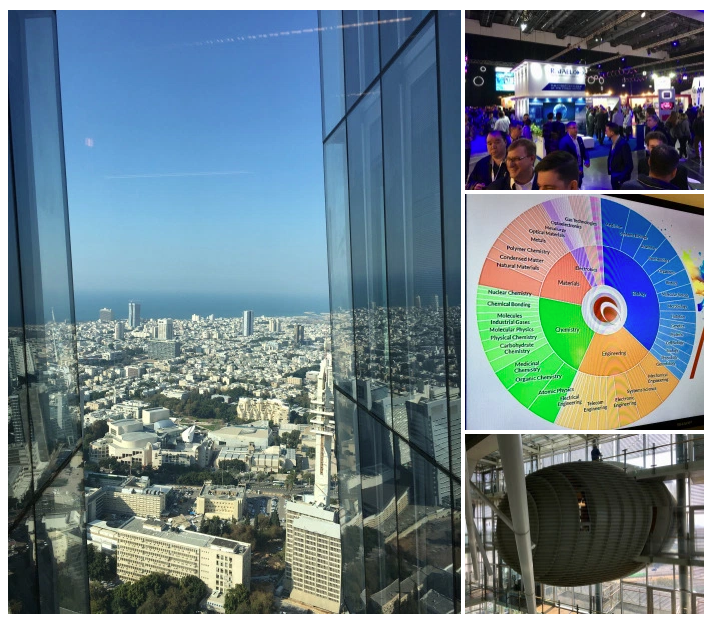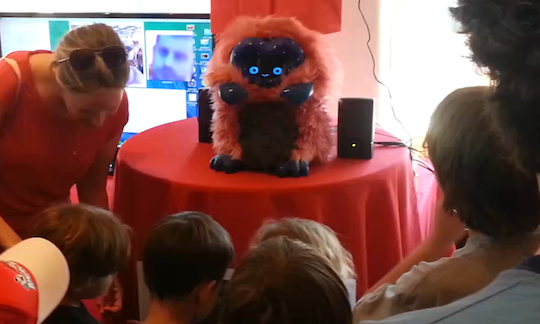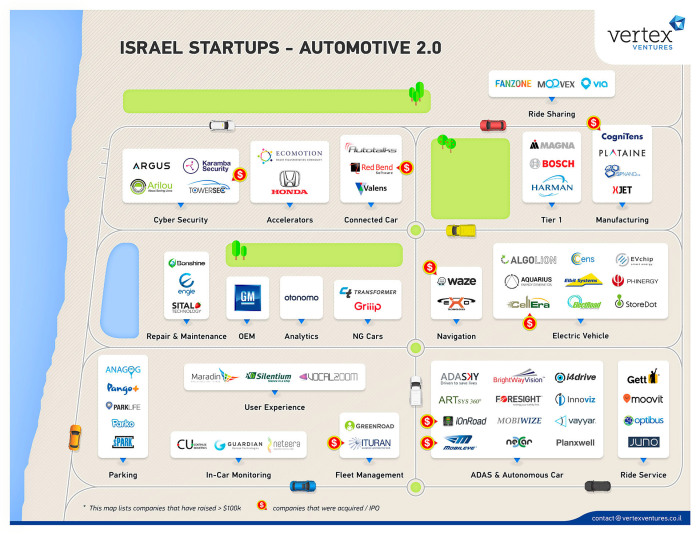This past week I led a group of 20 American tech investors to Israel in conjunction with the UJA and Israel’s Ministry of Economy and Industry. We witnessed firsthand the innovation that has produced more than $22 billion of investments and acquisitions within the past year. We met with the University that produced Mobileye, with the investor that believed in its founder, and the network of every multinational company supporting the startup ecosystem. Mechatronics is blooming in the desert from the CyberTech Convention in Tel Aviv to the robotic labs at Capsula to the latest in autonomous driving inventions in the hills of Jerusalem.
Sitting in a suspended conference room that floats three stories above the ground enclosed within the “greenest building in the Middle East,” I had the good fortune to meet Torr Polakow of Curiosity Lab. Torr is the PhD student of famed roboticist Dr. Goren Gordon. Gordon’s research tests the boundaries of human-robot social interactions. At the 2014 World Science Fair in New York City, Gordon partnered with MIT professor, and Jibo founder, Dr. Cynthia Breazeal to prove it is possible to teach machines to be curious. The experiment was conducted by embedding into Breazeal’s DragonBot (below) a reinforcement learning algorithm that enabled the robot to acquire on its own successful behaviors to engage humans. The scientists programmed within the robot nine non-verbal expressions and a reward system that was activated based upon its ability to engage crowds. The greater the number of faces staring back at the robot the bigger the reward. After two hours it successfully learned that by deploying its”sad face” with big eyes, that evokes Puss-in-Boots from the movie Shrek, it captured the most sustained attention from the audience. The work of Gordon and Breazeal opened up the field of social robots and the ability to teach computers human empathy, which will eventually be deployed in fleets of mechanical caregivers for our aging society. Gordon is now working tirelessly to creating a mathematical model of “Hierarchical Curiosity Loops (HCL)” for “curiosity-driven behavior” to “increase our understanding of the brain mechanisms behind it.”
Traveling east, we met with Yissum the tech transfer arm of Hebrew University, the birth place of the cherry tomato and Mobileye. The history of the automative startup that became the largest Israeli Initial Public Offering, and later a $15.3 billion acquisition by Intel, is a great example of how today’s Israeli innovations are evolving more quickly into larger enterprises than at anytime in history. Mobileye was founded in 1999 by Professor Amnon Shashua, a leader in computer vision and machine learning software. Dr. Shashua realized early on that his technology had wider applications for industries outside of Israel, particularly automative. Supported by his University, Mobileye’s first product, EyeQ chip, was piloted by Tier 1 powerhouse Denso within years of inception. While it took Mobileye 18 years to achieve full liquidity, Israeli cybersecurity startup, Argus, was sold last month to Elektrobit for a rumored $400 million within just four years from its founding. Shashua’s latest computer vision startup, OrCam, is focusing on giving sight to people with impaired vision.
In addition to Shahua’s successful portfolio of startups, computer vision innovator Professor Shmuel Peleg is probably most famous for catching the 2013 Boston Marathon Bombers using his imaging-tracking software. Dr. Peleg’s company, BriefCam, tracks anomalies in multiple video feeds at once, layering simultaneous events on top of one another. This technique autonomously isolated the Boston bombers by programing in known aspects of their appearance into the system (e.g., men with backpacks), and then isolating the suspects by their behavior. For example, as everyone was watching the marathon minutes before the explosion, the video captured the Tsarnaev brothers leaving the scene after dropping their backpacks on the street. BriefCam’s platform made it possible for the FBI to capture the perpetrators within 101 hours of the event, versus manually sifting through the more than 13,000 videos and 120,000 photographs taken by stationary and cell phone cameras.
This past New Year’s Eve, BriefCam was deployed by the New York City to secure the area around Times Square. In a joint statement by the FBI, NYPD, Department of Homeland Security and the New York Port Authority the authorities exclaimed that they plan to deploy BriefCam’s Video Synopsis across all their video cameras as they “remain concerned about international terrorists and domestic extremists potentially targeting” the celebration. According to Peleg, “You can take the entire night and instead of watching 10 hours you can watch ten minutes. You can detect these people and check what they are planning.”
BriefCam is just one of thousands of new innovations entering the SmartCity landscape from Israel. In the past three years, 400 new smart mobility startups have opened shop in Israel accumulating over $4 billion in investment. During that time, General Motor’s Israeli research & development office went from a few engineers to more than 200 leading computer scientists and roboticists. In fact, Tel Aviv now is the global hub of innovation of every major car manufacturer and automobile supplier, encircling many new accelerators and international consortiums, from the Drive Accelerator to Ecomotion, which seem to be opening up faster than Starbucks in the United States.
As the auto industry goes through its biggest revolution in 100 years, the entire world’s attention is now centered on this small country known for ground-breaking innovation. In the words of Israel’s Innovation Authority, “The acquisition of Mobileye by Intel this past March for $15.3 billion, one of the largest transactions in the field of auto-tech in 2017, has focused the attention of global corporations and investors on the tremendous potential of combining Israeli technological excellence with the autonomous vehicle revolution.”





